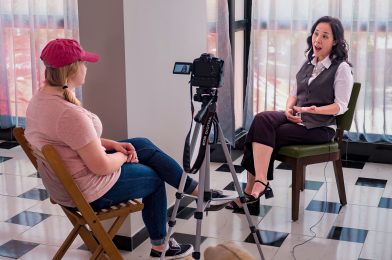Storytelling is at the heart of meaningful communication. Whether you’re working for a nonprofit, a business, or a community organization, a well-produced storytelling video can amplify your message and connect with your audience profoundly and emotionally.
In this post, I’m excited to walk you through the critical steps in producing a storytelling video for your organization. These steps are based on years of experience helping organizations craft stories that change lives. Check out the video embedded below for a more in-depth look!
1. Know the Story
Before the cameras start rolling, you must understand the organization’s heart. What is their mission? Who is their target audience? And most importantly, what story needs to be told to move that audience?
Taking the time to research the organization’s core values and message is essential. This step will guide the rest of the production, ensuring the video feels authentic and focused.
Key Questions to Ask:
- What is the organization’s mission and vision?
- Who are they trying to reach with their story?
- What is the message that will resonate most with the audience?
2. Pre-production Planning
Planning is where the magic starts. You’ll need to create a detailed outline or script, figure out who the key people in the story are, and determine where and when to shoot. A smooth pre-production process sets the tone for the entire project.
Considerations for Pre-production:
- Craft a story outline or script that aligns with the organization’s message.
- Identify the key individuals whose stories will be shared.
- Plan logistics: schedule the shoot, book locations, and gather necessary equipment.
3. Capture Real Stories
Once filming begins, it’s time to focus on authenticity. Real stories from real people are what makes storytelling videos powerful. Instead of scripting every line, encourage your subjects to speak from the heart. Their personal experiences are what will resonate with the audience.
Tips for Capturing Authenticity:
- Let the subjects share their stories naturally—don’t force them into a script.
- Create a relaxed environment where people feel comfortable sharing their experiences.
- Capture emotion through candid, real-life moments.
4. Use Visuals to Enhance the Story
Visual storytelling goes beyond just recording people talking. The environment, lighting, and supporting footage add to the story’s emotional impact. Think about how the visuals can enhance the narrative.
Visual Elements to Consider:
- Show more than just talking heads—film the environment, the work, and the people in action.
- Use thoughtful lighting and composition to emphasize the emotional tone.
- Capture different angles and scenes to create a visually engaging story.
5. Craft the Sound
Good sound design and music are critical to making the story come alive. Clear audio ensures your message is understood, while carefully selected music can set the emotional tone without overpowering the story.
Sound Considerations:
- Use high-quality audio equipment for clear dialogue.
- Choose music that supports the story’s mood and helps evoke the right emotions.
6. Weaving the Story in Post-production
In the editing phase, you’ll bring all the elements together. The pacing of the video, how the shots flow into each other, and the placement of interviews and supporting visuals all contribute to compellingly telling the story.
Editing Tips:
- Focus on pacing that keeps the viewer engaged.
- Think about how each visual and audio element serves the overall story.
- Don’t be afraid to trim footage if it distracts from the core message.
7. Deliver with Purpose
Every storytelling video should have a clear purpose. Whether raising awareness, inspiring action, or educating the audience, the video must lead the viewer toward a specific goal.
Final Steps:
- Make sure the video aligns with the organization’s overall goals.
- Add a solid call to action—this could be a prompt to donate, get involved, or learn more.
Conclusion
Producing a storytelling video is about more than just putting footage together—it’s about connecting with your audience on a deeper level and communicating a message that can inspire change. By following these steps, you can create videos that leave a lasting impact on both the organization and its audience.
Check out the embedded video below for a behind-the-scenes look at the storytelling process and to see these tips in action. Happy storytelling!

